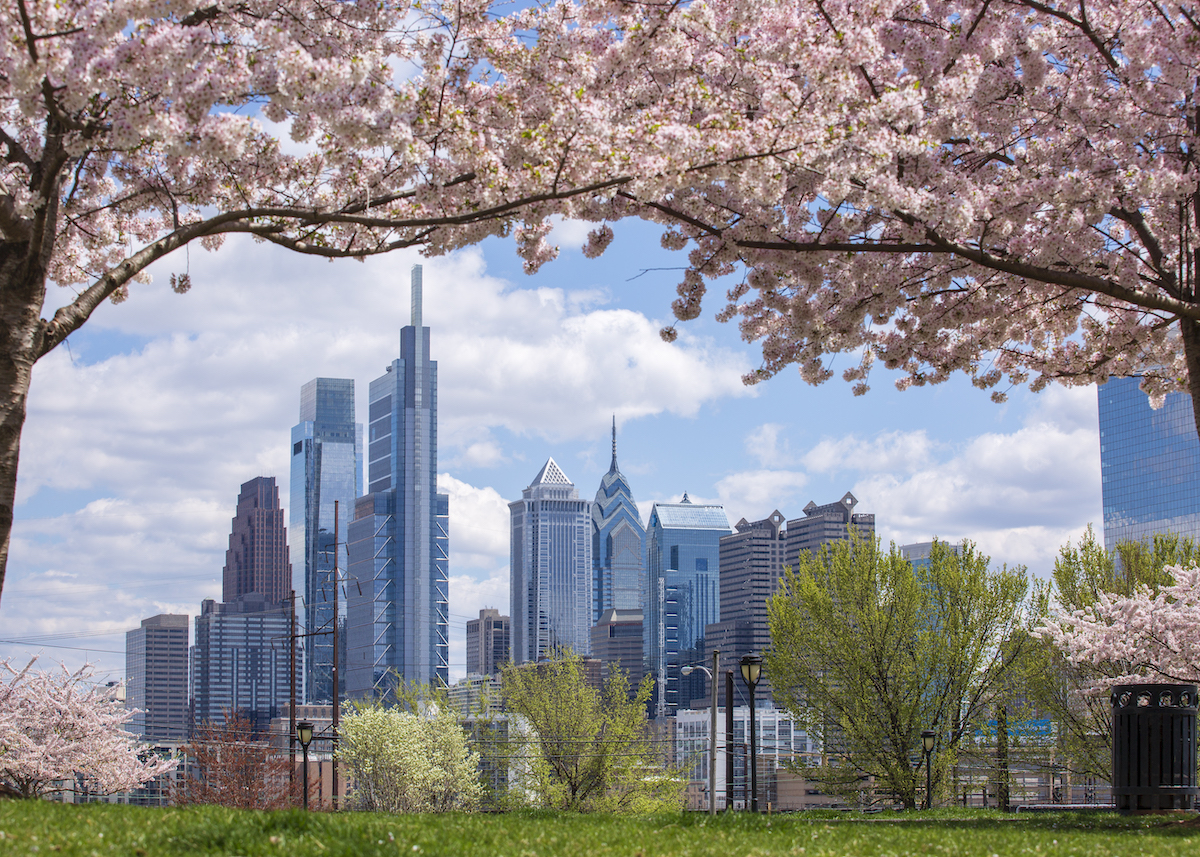When the pandemic hit the U.S. last spring, many city dwellers found themselves quarantining and working from home in smaller spaces than their suburban peers.
Cities often draw people in with their access to jobs, shared spaces and community-oriented systems like libraries and parks, according to Lauren Swartz, president and CEO of the World Affairs Council of Philadelphia. And as we begin to reenter society and public spaces as we did before the pandemic, Swartz’s org and those across the world are wondering: What does the future hold for cities?
She discussed this Monday during a Philly Tech Week 2021 presented by Comcast panel with Jody Holton, the assistant general manager of planning and strategic initiatives for SEPTA; Jeff Risom, partner and CIO of Gehl Architects based in Copenhagen; and Sean Wang, president of ITRI International Inc. (a subsidiary of Industrial Technology Research Institute of Taiwan), based in San Jose, California.
Here’s what they said could keep cities strong and highly populated in the years to come:
Making people feel safe again
Getting the virus under control will help determine the future of cities, Wang said, echoing a refrain we’ve heard from other economic development groups. While most of us have spent the last year inside our homes, cities where most residents are getting inoculated can jump-start life again. In Taiwan, community cases are very low, and while the vaccine rollout isn’t going as quickly as places in the U.S., folks are able to operate fairly normally because of mask compliance and widespread-belief in science for the common good.
“On mass transit, at large gatherings, people are still wearing masks. New jobs have been created, and my international friends are marveling,” Wang said. “To get people to feel safe is to increase the economic situation.”
The 15-minute rule
When urbanists look for pointers to what vastly improves a person’s quality of day-to-day life, they often refer to the 15-minute rule, which says a person who can access most of what they need to live within 15 minutes — a trip to the grocery store, their workplace, a school, the pharmacy — is happier and more fulfilled.
This is possible in much of Philadelphia, said Gehl Architects’ Risom, who used to work here. But the neighborhoods outside of Philly’s deep urban core could use some more attention. If we could bridge some of those gaps that exist, like access to healthy food and strong schools, this “rule” would apply to many more Philadelphians.
“We can’t just copy other places, but we can be inspired by those concepts but authentically local,” he said. “It’s even more important now, and the idea of just having the freedom to be able to feel safe and connected no matter which neighborhood you live in — that notion would be pretty great for Philadelphia.”
“Soft” infrastructure
President Joe Biden has recently released his plan for trillions of spending on infrastructure, but to see success, cities also need what’s called “soft” infrastructure. The term refers to the services and places required to maintain the economic, cultural and societal standards of city, like its libraries and parks.
While hard infrastructure might cover the roads a school is built on, soft infrastructure might ensure there’s a quality of education, a community center for students to hang out at and programming for teens.
“Social infrastructure is meant to improve people’s lives,” Risom said. “It’s the idea of libraries, community centers, meeting places for teens, sports clubs — Biden didn’t mention those soft elements along with the hard ones, but they can make a huge difference.”
Addressing climate change
Many major urban hubs will face challenges due to climate change in the next several decades, Philadelphia included, as its international airport is at risk of both rising sea levels and heavier storms.
Zero carbon emission should be a long-term project for all countries, Wang said. And transit should play a major factor in that goal, Holton said.
“Transit is one of the things people really love about the city,” she told attendees. “It’s probably similar to a lot of other cities in which the city wouldn’t operate without it.”
Public transportation is inherently sustainable, and as the transit system gets back on track from a year of revenue losses — up to $1 million each day during the pandemic — it forges forward with a recently announced $25 million overhaul. Holton said SEPTA already has one of the largest zero-emission bus and train systems in the U.S., and the transit authority is working on having a complete hybrid fleet of buses by next year.







